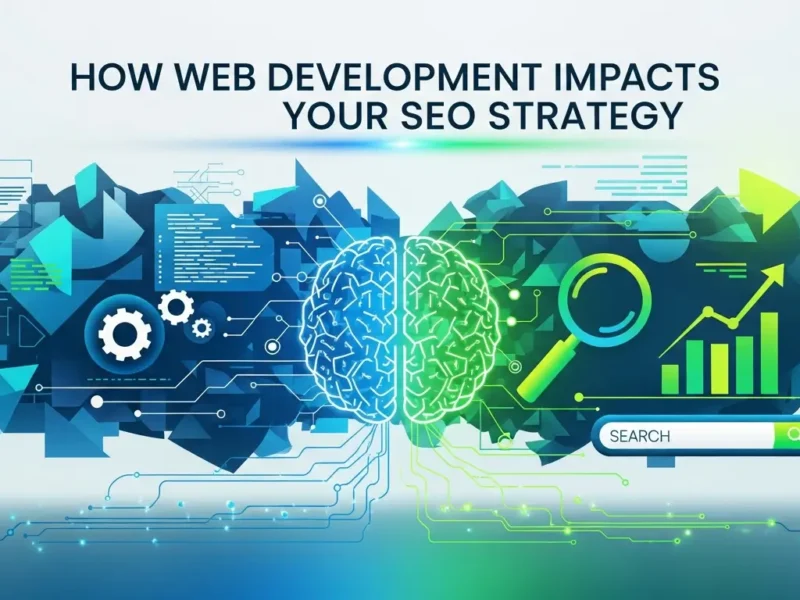In the ever-evolving digital landscape, your website isn’t just a digital storefront; it’s the bedrock of your online presence, the engine driving your business goals, and often, the first impression you make. But beneath the sleek design and compelling content lies a complex interplay of technologies known as the “technology stack.” Choosing therighttechnology stack for your website is arguably one of the most critical decisions you’ll make in any web development project. Get it right, and you lay a foundation for scalability, performance, security, and future innovation. Get it wrong, and you invite technical debt, performance bottlenecks, security vulnerabilities, and costly overhauls down the line.
As an experienced SEO copywriter and industry expert, I’ve witnessed firsthand how a well-chosen stack can propel a business forward, and conversely, how a mismatched one can stifle growth. This comprehensive guide will equip you with the insights, frameworks, and actionable advice needed to navigate this crucial decision, transforming a daunting task into a strategic advantage. We’ll go beyond generic advice, delving into the nuanced considerations that separate a good choice from an exceptional one.
Defining Your Project’s Core Needs
Before you even consider a single programming language or database, the first, most vital step is to articulate your project’s fundamental requirements and objectives. This isn’t about technology; it’s about strategy.
- Business Goals & User Experience (UX): What is the primary purpose of your website? Is it an e-commerce platform designed for high-volume transactions? A content-rich blog aiming for reader engagement? A lead-generation tool? A robust web application offering specific functionalities? Your business goals will dictate the core functionalities and user experience you need to deliver.
- Functionality Requirements: Detail every feature your website needs. This could include user authentication, payment gateways, complex search filters, real-time data updates, content management, analytics integration, API integrations with third-party services, and more. Each feature might have specific technical implications.
- Performance & Scalability Expectations: How much traffic do you anticipate? Will it spike seasonally? Do you foresee rapid growth? A website handling thousands of concurrent users requires a fundamentally different architecture than a small business brochure site. Scalability considerations are paramount for future-proofing.
- Security & Compliance: What kind of data will your website handle? Personal identifiable information (PII), financial data, sensitive intellectual property? Compliance with regulations like GDPR, HIPAA, or PCI DSS will heavily influence your stack choices, particularly concerning data storage and transmission. For a deeper dive into selecting a stack for highly regulated industries, you might find our detailed guide on Choosing the Right Tech Stack for a Telemedicine Platform particularly insightful.
- Budget & Timeline: Realistic constraints are non-negotiable. Some technologies demand higher development costs due to specialized talent or licensing, while others offer faster time-to-market. Balancing ambition with practical limits is key.
- Team Expertise & Availability: Do you have an in-house development team? If so, what are their strengths? If outsourcing, is there a robust talent pool available for your chosen stack? Opting for an obscure technology can lead to higher costs and difficulty finding skilled developers for ongoing maintenance. A reliable web development company can guide you through these choices, ensuring your team’s skills align with the project’s demands.
The Anatomy of a Web Stack: Core Components Explained
A typical web technology stack is broadly divided into several layers, each serving a distinct purpose. Understanding these components is essential to making an informed decision.
Frontend (Client-Side): The User’s Experience
The frontend is what your users directly interact with in their web browser. It’s about presentation, interactivity, and user interface (UI).
- Core Technologies: HTML (structure), CSS (styling), JavaScript (interactivity).
- Popular Frameworks/Libraries: React, Angular, Vue.js, Svelte. These provide structured ways to build complex, dynamic user interfaces, improving developer efficiency and maintainability.
- Considerations: How interactive does your site need to be? What kind of user experience are you aiming for? The choice here impacts developer productivity, loading speeds, and overall UI/UX.
Backend (Server-Side): The Engine Room
The backend is the server, application, and database that power your website. It handles business logic, data processing, authentication, and API communication.
- Programming Languages & Frameworks:
- Python: (Django, Flask) Excellent for data science, AI/ML, and rapid development, known for readability.
- PHP: (Laravel, Symfony) Powers a significant portion of the web (WordPress), known for ease of deployment and extensive community support.
- Node.js: (Express.js) Allows JavaScript to run on the server, ideal for real-time applications and full-stack JavaScript teams.
- Ruby: (Ruby on Rails) Renowned for developer productivity and convention over configuration.
- Go: (Gin, Echo) Favored for high-performance systems, microservices, and concurrent processing.
- Considerations: Performance needs, scalability, developer availability, ecosystem maturity (libraries, tools), and specific features required by your application.
Database: The Data Repository
The database stores and manages all your website’s information, from user profiles to product catalogs and content.
- Relational Databases (SQL): MySQL, PostgreSQL, SQL Server.
- Characteristics: Structured data, strict schema, strong consistency (ACID properties).
- Best for: Applications requiring complex queries, strong data integrity, and defined relationships (e.g., e-commerce, banking).
- Non-Relational Databases (NoSQL): MongoDB, Cassandra, Redis.
- Characteristics: Flexible schema, horizontally scalable, often optimized for specific data access patterns.
- Best for: Large volumes of unstructured or semi-structured data, high-throughput applications, real-time data, and rapid iteration (e.g., social media, IoT, content platforms).
- Considerations: The nature of your data, future data growth, consistency requirements, and query complexity.
Web Server & Hosting: The Delivery Mechanism
The web server (e.g., Apache, Nginx) serves web content to users, while hosting provides the infrastructure for your website to live on the internet.
- Options: Shared hosting, VPS, dedicated servers, cloud platforms (AWS, Azure, Google Cloud Platform), serverless functions (AWS Lambda, Azure Functions), specialized platforms (Vercel, Netlify for JAMstack).
- Considerations: Scalability, reliability, geographic distribution (CDN), cost, ease of deployment, and managed services versus full control.
Strategic Pillars: Making an Informed Decision
With a clear understanding of your requirements and the components of a tech stack, let’s explore the strategic considerations that will guide your final choice.
- Developer Availability & Ecosystem: A thriving community and readily available talent pool for your chosen stack are invaluable. This means easier hiring, abundant libraries, frameworks, and tools, and a strong support network for problem-solving. Popular choices like JavaScript (Node.js/React), Python, and PHP benefit from massive ecosystems. When seeking specialized talent, even a specific web development company in Noida might offer distinct advantages due to local expertise and competitive pricing.
- Future-Proofing & Maintainability: Technology evolves rapidly. Choose a stack with long-term support, active development, and a clear upgrade path. A well-structured stack should be easy to maintain, debug, and extend, minimizing technical debt and facilitating future innovations. This often means opting for widely adopted, stable technologies over bleeding-edge, unproven ones for core business applications.
- Cost of Ownership: This extends beyond initial development. Consider licensing fees (if any), hosting costs, ongoing maintenance, security updates, and the cost of scaling infrastructure. Cloud-native or serverless solutions can offer cost efficiencies for variable workloads.
- Performance & Scalability: Your stack must be capable of handling anticipated traffic and processing loads. While many modern technologies can be scaled, some (e.g., Go, Node.js) are inherently optimized for high concurrency and performance, making them suitable for real-time applications or high-traffic APIs.
- Security Implications: Robust security is paramount. A mature stack often comes with built-in security features, battle-tested frameworks, and a community actively identifying and patching vulnerabilities. Ensure your chosen components have a strong track record and clear security guidelines.
- Integration Capabilities: Your website will likely need to integrate with various third-party services (payment processors, CRM, marketing automation, analytics). A stack with robust API support and well-documented libraries for common integrations will save significant development time.
Popular Archetypes and the Evolving Landscape
While there’s no “one-size-fits-all” stack, understanding common archetypes can provide a starting point:
- LAMP/LEMP Stack: (Linux, Apache/Nginx, MySQL, PHP/Python/Perl) A classic, highly stable, and cost-effective choice for many content-driven sites and web applications.
- MERN/MEAN Stack: (MongoDB, Express.js, React/Angular, Node.js) Popular for single-page applications (SPAs) and real-time interactive experiences, leveraging JavaScript across the entire stack.
- JAMstack: (JavaScript, APIs, Markup) Emphasizes pre-rendered content and static site generators (Gatsby, Next.js), served via CDNs, ideal for speed, security, and scalability with dynamic features added via APIs.
- Serverless Architectures: Leverages cloud functions (AWS Lambda, Azure Functions) to run code without managing servers, ideal for event-driven applications and reducing operational overhead.
The “right” technology stack is not about picking the trendiest tools, but about strategically aligning technology choices with your specific project requirements, business goals, and long-term vision.
Conclusion
Choosing the right technology stack is a strategic investment in your website’s future. It demands a thoughtful, data-driven approach, beginning with a deep understanding of your project’s unique needs and culminating in an informed decision about the technologies that will power your digital presence. By considering functionality, performance, scalability, security, budget, and the available talent pool, you can build a robust, maintainable, and future-proof website that serves your objectives for years to come.
Ready to transform your vision into a high-performing reality? Don’t let the complexity of tech stack decisions slow you down. Contact our experienced web development strategists today for a personalized consultation and build a website that truly performs!



